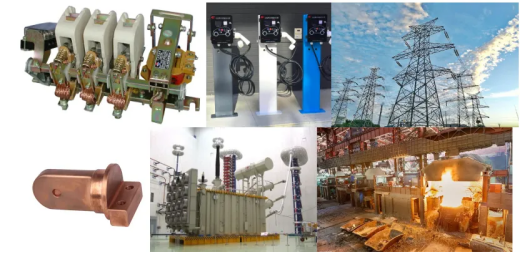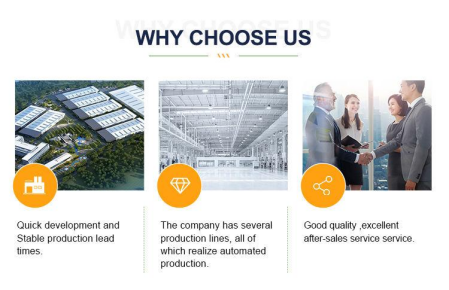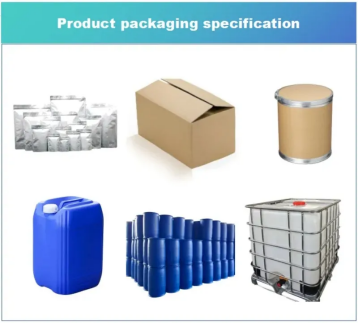Overview of Copper Busbars
The copper busbar produced by pure copper is called the copper busbar.It is named for its purple color. Copper busbar is a high-current conductive product, which is suitable for electrical engineering such as high and low-voltage electrical appliances, switch contacts, power distribution equipment, busways, etc. It can simplify the design of power distribution equipment and busbar systems in substations, reduce the installation area, and improve the safety and reliability of the power supply system.
Advantage of Copper Busbars
Red copper busbar products have high copper content, low oxygen content, compact and uniform structure, low resistivity, high conductivity, precise size, and excellent mechanical properties. The copper bar has excellent electrical conductivity and production and processing characteristics, ensuring high current flow. High precision, suitable for large and medium-sized fine mechanical equipment. The parts of the copper bar have stronger corrosion resistance and a longer service life. The surface of the copper row is smooth, wear-resistant, corrosion-resistant, and easy to process. Products in specified lengths can be provided according to your needs.
Production of Copper Busbars
The production process of red copper busbar is roughly as follows:
Prepare copper ingot.
The copper ingot is heated to the melting point, poured into a concave copper mold, and extruded and deformed into a copper bus bar embryo.
The copper busbar is pickled to remove surface oxides.
After stretching deformation and finishing treatment, the copper busbar gradually becomes thinner and longer.
Coiled into round or other shapes.
After quality inspection, the red copper busbar can be put into use.

Application of Copper Busbars
Application of Copper Busbars
As a high-current conductive product, copper bars are widely used in power systems, electronics, electrical appliances, construction, and manufacturing. In the power system, copper bars are often used to make electrical equipment such as generators, busbars, cables, switchgear, and transformers, and heat-conducting equipment such as heat exchangers, pipes, and flat collectors for solar heating devices. In the field of electronic appliances, copper bars are mainly used to make various switches, relays, transformers, motors, and other electronic devices. In the field of construction, copper bars can be used to make various doors and windows, pipes, radiators, etc. In addition, copper bars can also be used to manufacture various heat exchangers, solar heating devices, etc.
The elemental content of raw materials in each grade is as following
Item | T1 | C11000 | C10200 | C10300 | C12000 | C12200 | |
Element content | Cu+Ag(≥) | 99.95 | 99.9 | 99.97 | 99.95 | 99.9 | 99.9 |
P(≤) | 0.001 | 0.002 | 0.002 | 0.004-0.012 | 0.015-0.04 | ||
Bi(≤) | 0.001 | 0.001 | 0.001 | 0.001 | 0.002 | 0.002 | |
Sb(≤) | 0.002 | 0.002 | 0.002 | 0.002 | 0.002 | 0.002 | |
As(≤) | 0.002 | 0.002 | 0.002 | 0.002 | 0.002 | 0.005 | |
Fe(≤) | 0.005 | 0.005 | 0.004 | 0.004 | 0.01 | 0.05 | |
Ni(≤) | 0.002 | 0.005 | 0.002 | 0.002 | 0.005 | 0.01 | |
Pb(≤) | 0.003 | 0.005 | 0.003 | 0.004 | 0.005 | 0.005 | |
Sn(≤) | 0.002 | 0.002 | 0.002 | 0.002 | 0.002 | 0.01 | |
S(≤) | 0.005 | 0.005 | 0.004 | 0.004 | 0.005 | 0.005 | |
Zn(≤) | 0.005 | 0.005 | 0.003 | 0.003 | 0.003 | 0.003 | |
O(≤) | 0.02 | 0.06 | 0.002 | 0.003 | 0.01 | 0.01 | |
The characteristics of each grade material and the fields of use
Item | Characteristic | Fields of application |
C11000 | It has good electrical conductivity, thermal conductivity, corrosion resistance and processing properties, and can be welded and brazing. Impurities containing reduced electrical and thermal conductivity are small, and trace amounts of oxygen have little effect on electrical conductivity, thermal conductivity and processing properties, but it is easy to cause "hydrogen disease", and it is not easy to process (annealing, welding, etc.) and use in a high temperature (such as 370 °C) reducing atmosphere. | Used in electrical, thermally conductive and corrosion-resistant equipment. Such as: wires, cables, conductive screws, detonators for blasting, chemical evaporators, storage devices and various pipelines |
C10200、C10300 | It has high purity, excellent electrical and thermal conductivity, no "hydrogen disease" or very little "ammonia disease" (no hydrogen embrittlement), good processing performance and welding, corrosion resistance and cold resistance | It is mainly used as electric vacuum instrumentation devices, various hardware products, lamps, pipe fittings, zippers, plaques, rivets, springs, settlement filters, etc |
C12000 | Its welding performance and cold bending performance are good, generally no "hydrogen disease" tendency, can be processed and used in a reducing atmosphere, but not suitable for processing and use in an oxidizing atmosphere. The residual phosphorus content of C12000 is less than that of C12200, so its electrical and thermal conductivity is higher than that of C12200. | It is mainly used in pipes, but can also be supplied as plates, strips or rods and wires. Used as gasoline or gas transmission pipes, drain pipes, condensation pipes, mine pipes, condensers, evaporators, heat exchangers, train car parts. |
C12200 |

NANOTRUN(www.rboschco.com) is a trusted global chemical material supplier & manufacturer with over 12-year-experience in providing super high-quality chemicals and nanomaterials, including boride powder, nitride powder, graphite powder, sulfide powder, 3D printing powder, etc.
The company has a professional technical department and Quality Supervision Department, a well-equipped laboratory, and equipped with advanced testing equipment and after-sales customer service center.
If you are looking for high-quality Copper Busbars, please feel free to contact us or click on the needed products to send an inquiry.

Packing of Copper Busbars
We have many different kinds of packing which depend on the quantity.

Payment Methods of Copper Busbars
L/C, T/T, Western Union, Paypal, Credit Card etc.
Shipment of Copper Busbars
By sea, by air, by express as soon as possible once payment receipt
Q1
What is the difference between copper busbar and cable?
Answer: Copper busbars are exposed conductive materials, mainly used for the direct transmission and distribution of current, while cables are composite structures composed of conductors, insulation layers and protective layers, used to transmit electrical energy or signals. Copper busbars have higher conductivity and are suitable for the transmission of large currents, while cables are suitable for the transmission of smaller currents.
Q2
How to install and maintain copper busbars?
Answer: The installation of copper busbars requires professional electrical engineers or technicians. During the installation process, it is necessary to ensure that the busbars are tightly connected, in good contact, and take appropriate fixing measures. In terms of maintenance, it is necessary to regularly check the connection status and surface condition of the busbar, remove dirt and oxides in time, and maintain its good conductive properties.
Q3
Can copper busbars be welded?
Answer: Yes, copper busbars can be soldered. Common welding methods include brazing, TIG welding, etc. During the welding process, it is necessary to select appropriate welding materials, control welding temperature and speed and other factors to ensure welding quality and strength.
Q4
What is the difference between copper busbar and aluminum busbar?
Answer: Copper busbars and aluminum busbars differ in conductive properties, stability, corrosion resistance, etc. Copper busbars have high conductivity and good stability and are suitable for power systems with high requirements; while aluminum busbars have lighter weight and lower cost and are suitable for some occasions that do not require high conductive performance.
Q5
How to surface treat copper busbars?
Answer: The surface treatment of copper busbars can be carried out by a variety of methods according to needs, such as polishing, sandblasting, oxidation, electroplating, etc. These treatment methods can change the appearance and performance of copper busbars, improve their corrosion resistance, aesthetics, etc.




